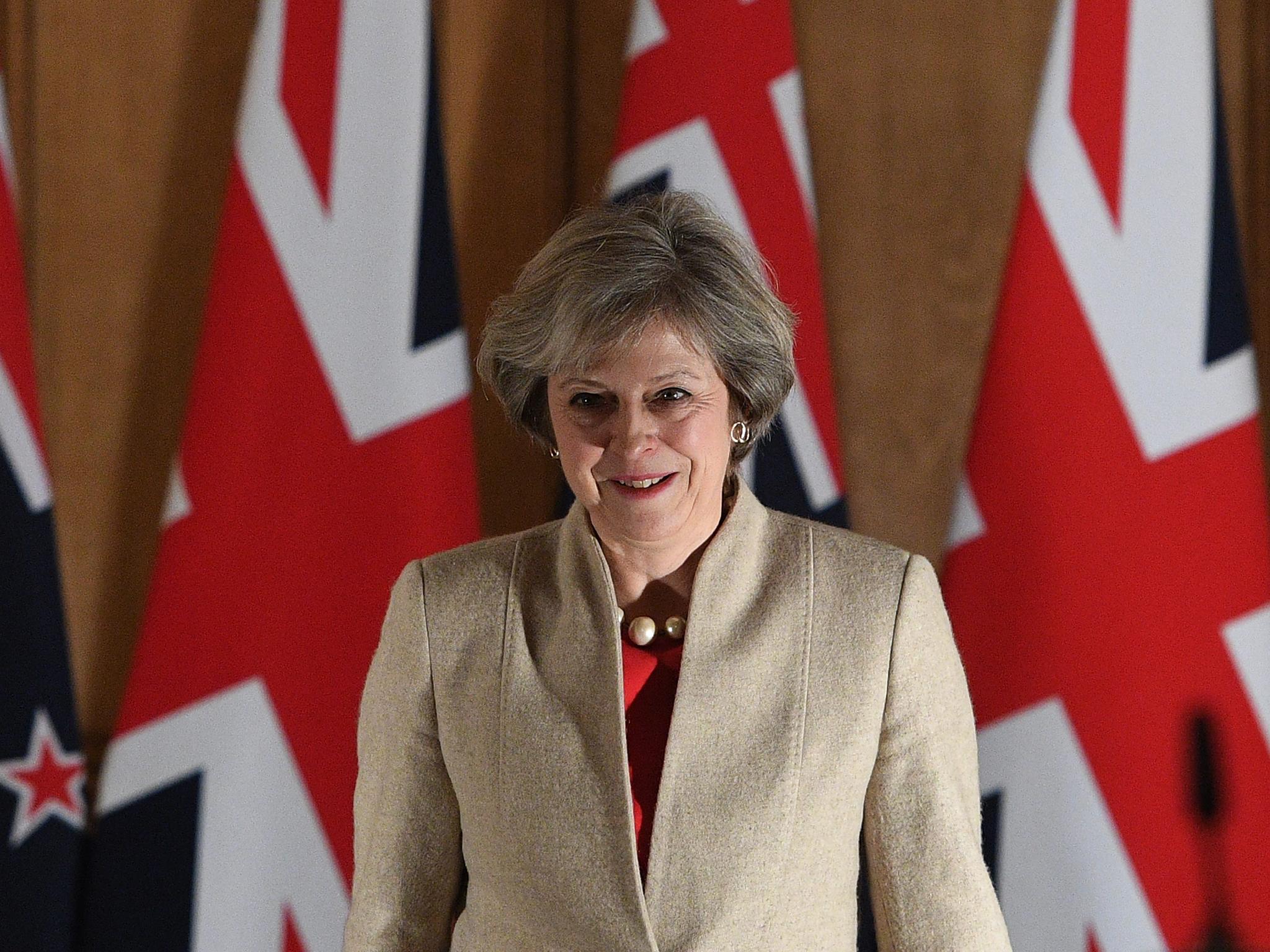Seven things we know about Theresa May's Brexit plan
On Tuesday the Prime Minister is expected to set out her plans for Brexit at a major speech

Theresa May will, on Tuesday, set out her plans for Brexit at a major speech in London, which is expected to provide clarity ahead of triggering Article 50 in two months’ time.
Her aides in Downing Street have closely guarded the text of the speech but it is expected it will be used to defy her critics, who say the Prime Minister has no clear strategy beyond the mantra of “Brexit means Brexit” and accusations she is hiding behind her rule of “no running commentary” on the Government’s strategy.
In her speech at Lancaster House, Ms May is likely to reassure Brexiteers that she intends to stick to her timetable and “provide some of the certainty that people have been looking for” according to aides. Here The Independent looks at what we know, so far, about Theresa May’s plan for Brexit:
Britain is leaving the EU
“Britain is going to leave the European Union,” declared Ms May at the Conservative Party conference in Birmingham last year. This seems obvious at first glance but there have been calls for a second referendum on the terms of Brexit, which the Prime Minister has rejected. As it stands, there will be no second referendum or second vote on membership of the EU.
Article 50 to be triggered in March
Despite an imminent judgement at the Supreme Court over whether Ms May needs to consult Parliament before triggering the mechanism for leaving the EU, she is likely to reaffirm her commitment to triggering Article 50 before the end of March – a pledge made ahead of the Tory conference last year.
But the Supreme Court case will not be the only issue causing a headache for Ms May and her aides in the coming weeks and months ahead of serving notice of Article 50. The breakdown of the decade-long power sharing agreement in Northern Ireland is expected to trigger new elections and threaten Ms May’s Brexit timetable. Downing Street and Government ministers, however, are determined to press ahead.
So, when will Britain actually leave the EU?
Article 50, once triggered, allows for a maximum two-year timeframe to negotiate an exit deal with the other European countries. If the Prime Minister’s timetable is correct and the Article 50 notice is served to Brussels in two months’ time, then Britain could, technically, be out of the EU by March 2019.
However, many, including civil servants, expect the process to last much longer. Ivan Rogers, who dramatically quit as Britain’s ambassador to the EU earlier this month, has privately suggested a trade deal might take a decade to finalise. For the two-year process to be extended all the 27 other EU states must provide their approval.
A “bespoke” deal
Ms May has called for a “bespoke” deal with the EU after Brexit, rather than an “off the shelf” solution. This appears to reject the so-called Norway model – the country is not a member of the EU but has access to the majority of the continent’s market and is part of the European Economic Area (EEA) agreement.
In return Norway is obliged to be part of Europe’s passport-free Schengen travel zone. Norwegians also have no say in EU rules and have no representatives in any of the bloc’s institutions despite paying a considerable amount each year for its semi-detached relationship with the EU.
But it is clear Downing Street believe Ms May will achieve a deal with a model that does not already exist.
Jurisdiction of the European Court will end
As anticipated, Ms May will say the European Court will hold no influence over Britain once it has left the EU. According to the Telegraph, she will use her speech on Tuesday to rebuke those who have claimed the UK will remain under the rule of European courts for years after Brexit, especially if a transitional deal is on the table.
Control of immigration
It is quite clear the Prime Minister believes immigration control is a “red line” – she views the referendum result, in part, as an instruction from the British people to curb migration. Ms May has already ruled out an Australian style points-based system, which advocated by the leading voices in the campaign to leave the EU last year. Ms May is yet to outline how she intends to bring down immigration figures.
Single market access
While Ms May has not explicitly said she is ready to leave the EU’s tariff-free market, she has indicated she is prepared to do so. During an interview last week the Prime Minister said the UK should not expect to hold onto “bits” of its membership.
It is also clear the Prime Minister will not accept the free movement of people in a final Brexit deal, which is one of the conditions of access to the single market. European leaders have consistently said, since the referendum, that Britain cannot have access to the single market “à la carte”. At the weekend, a Downing Street source told Sky News the issue of the single market “will be answered on Tuesday when the Prime Minister sets out her negotiations”.
Join our commenting forum
Join thought-provoking conversations, follow other Independent readers and see their replies
Comments